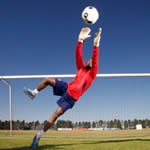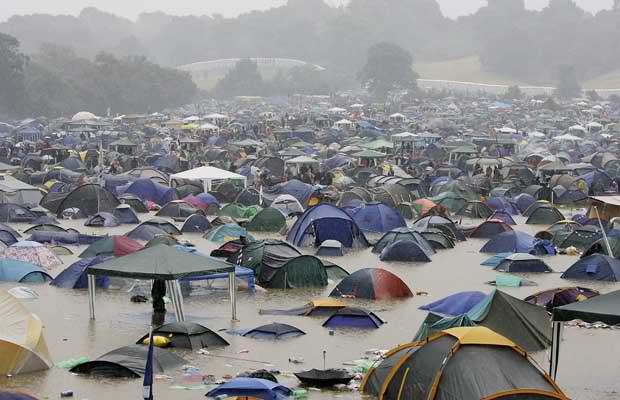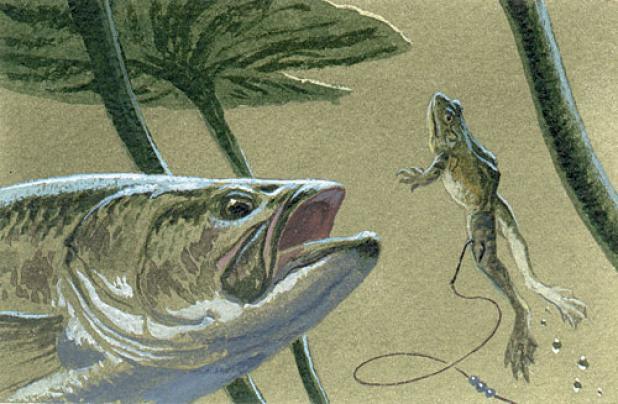
Goalkeepers are the last line of defense, so their importance to a soccer team can't be overstated. A strong defense is twice as good when it has a good goalkeeper backing it up, and keeping balls out of the net reflects directly on the scoreboard and indirectly through team morale.
There are hundreds of ways to improve a goalkeeper's skill level. Veteran soccer coach Jeff Pill has teamed up with eteamz to share his insight into the game. Here are some of the drills he organizes to help goalkeepers make the big stops when it counts.
BREAKAWAY
The Game - Team A is shooting on team B's goalkeeper, starting from the line that is 40 yards away from the goal.
- Players go in one at a time and only get one shot each time.
- As soon as the shot is taken, the next player may go.
- Players must retrieve their own ball.
- Each team gets 90 seconds to take as many shots as they can. The amount of goals scored is recorded and compared to the other team's score.
- Teams switch after 90 seconds.
 Coaching Points
Coaching Points - Keepers must determine how far they can come out without giving up a "chip" over their head.
- Keepers should stay on their feet, making themselves as "big" as possible, for as long as possible.
- Dive, slide, for the ball, hands first, only when sure of getting the ball. Dive immediately after the attacker's touch on the ball.
- Keepers must also work on guiding the ball over the crossbar.
- Shooters must decide between dribbling and shooting or chipping the keeper immediately after the save is made.
- When dribbling, if the keeper stays in the net, slot ball low, just out of reach of the keeper's feet.
- If the keeper come out of the goal, look to unbalance the keeper, then dribble around and shoot.
- Fitness for all involved.
DIVING SPEED
The Game - Set up triangular goal with cones 12 feet apart.
- Players A, B & C each have a ball.
- Keeper starts at D.
- Player A rolls ball towards E (No emphasis on scoring!), keeper dives and stops ball, returning it to player A as quickly as possible and then gets into position at E.
- Player B then rolls the ball to cone F, etc.
- Switch keepers at 90 seconds or when fatigue sets in.

Coaching Points
- Look for proper diving technique.
SHOT STOPPER
Organization - Coach stands 5-7 yards away with ball in hand.
- Coach simulates shots by rolling soccer ball to the side, lobbing over the head, throwing the ball downwards to replicate downwards header, but always gives the keeper a chance to make the save.
- If keeper misses the ball or pushes it away, coach immediately picks up another ball while keeper is recovering.
- When save is made, keeper must first throw the ball back to the coach, before doing anything else. Keeper uses the momentum of the throw to aid in the recovery back to the alert and alive position.
- Give rest periods when fatigue sets in.
 Coaching Points
Coaching Points - Throwing the ball back from the side diving position, while pumping back with the upper knee, brings the correct recovery position, forcing proper side diving technique and positioning of hands. This artificial condition has the effect of conditioning the keeper to adopt the open, side diving position when making a save.
- Look for these improper diving positions:
- Swinging both knees around in front.
- Dives backwards.
- Belly flops.
- Rolls onto the back.
BUBBA'S KEEPER TOSS
The Game - Keeper A tries to throw ball into B's net and vice versa.
- First keeper to score wins.
 Coaching Points
Coaching Points - Proper technique and throwing skills, developing arm strength.
- Accuracy of throws will improve.
- Heavy psychological factor because the two keepers compete solely against one another.
- High work rate for keepers because this match can last a while with talented keepers.
- Emphasize positioning.
Progression - Give each keeper a ball.
- Add attackers who may only head balls into net.



